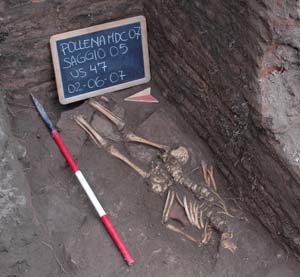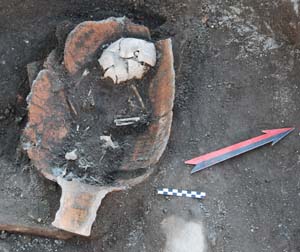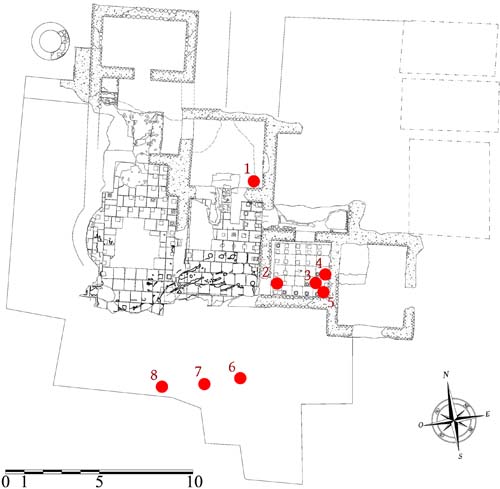Human Bones from Pollena Trocchia


Study of the funerary and osteological evidence obtained from the site of Masseria De Carolis permits us to affirm that, contemporaneous with the last phases of the life of the complex (precisely at the time preceding the 472 eruption of Vesuvius), a part of the site was set aside solely for funerary purposes, primarily for the burial of infants. This practice is known to have been common in the Late Antique period, especially in bath complexes; however, the case that we are presented with at Pollena Trocchia is unique in that it is the first of its kind in the Somma-Vesuvius region.


Amongst these, perhaps the most fascinating are the two enchitrysmòs burials deposited less than one meter apart from one another with the same orientation. What is peculiar is that these infants were deposited in positions in exact opposition to one another with the heads positioned adjacently. The fact that these two amphorae are in such close proximity and that the tradition of infant inhumation in amphorae is reminiscent of the womb, suggests a blood relationship likely exists between the two children. DNA analysis is currently being undertaken to establish this with greater certainty.

References:
G.F. De Simone, M. Lubrano, M. Torino, A. De Luca, A. Perrotta, C. Scarpati, La villa con terme di Pollena Trocchia in località Masseria De Carolis: architettura, abitanti, eruzioni, Annali. Università degli Studî Suor Orsola Benincasa 2011-2012: 195-217 [ISSN: 2037-5867]
